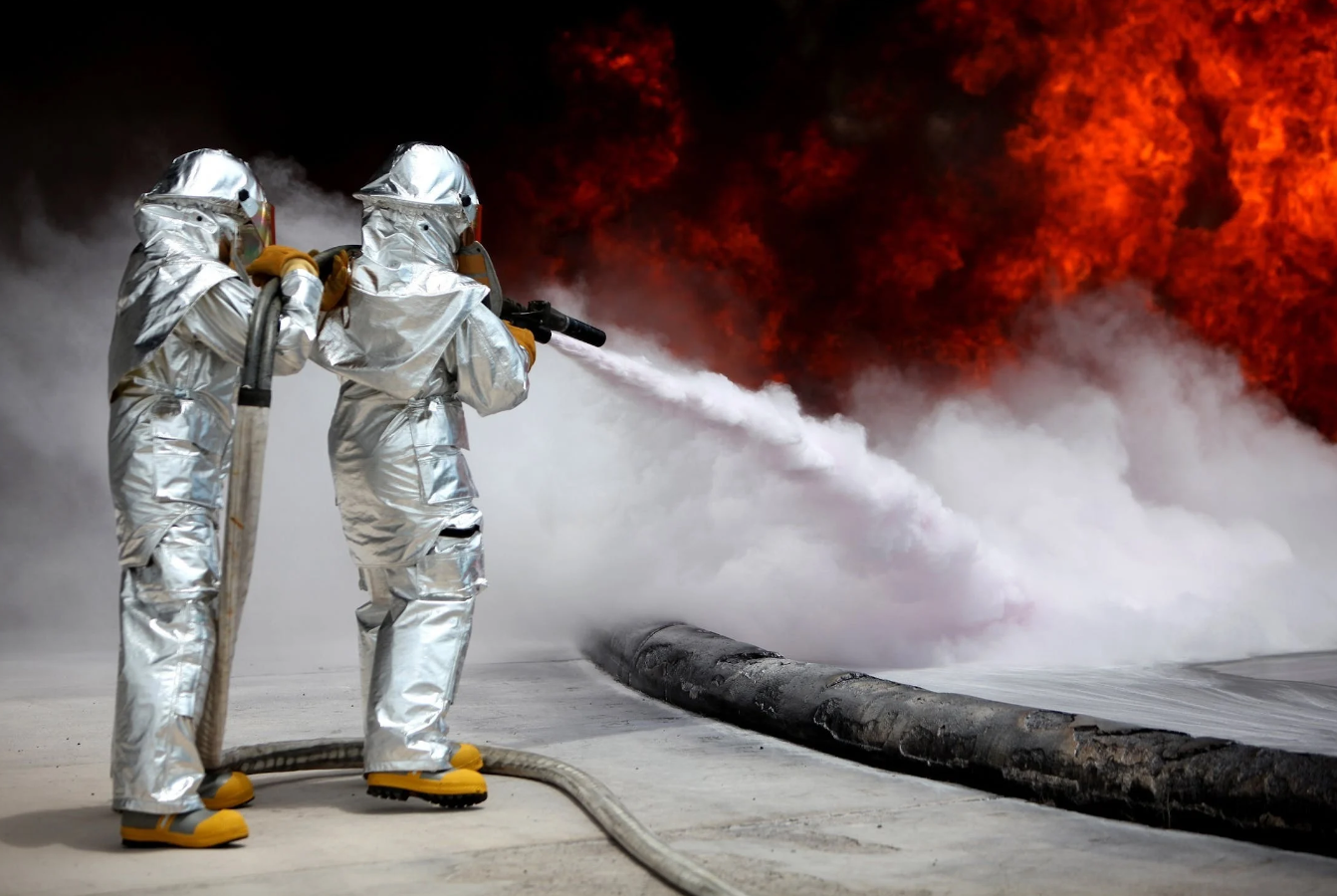Foam Fables: Unraveling the Controversies Surrounding AFFF Firefighting Foam
 In the world of firefighting, Aqueous Film-Forming Foam (AFFF) has been a vital tool in combating flammable liquid fires. However, this seemingly indispensable solution has come under scrutiny due to its environmental and health implications. The controversies surrounding AFFF have prompted a closer look at its composition, usage, and consequences associated with its widespread application.
In the world of firefighting, Aqueous Film-Forming Foam (AFFF) has been a vital tool in combating flammable liquid fires. However, this seemingly indispensable solution has come under scrutiny due to its environmental and health implications. The controversies surrounding AFFF have prompted a closer look at its composition, usage, and consequences associated with its widespread application.
Table of Contents
The Rise of AFFF: A Firefighting Revolution
Firefighting foam is a synthetic substance that can be used to extinguish fires. It was first developed in the early 1900s. It was later introduced in the 1960s in the US for extinguishing fires, but it wasn’t until the 1980s that it became popular.
Firefighting foams are used in military and industrial applications as well as by firefighters. AFFF stands for “aqueous film-forming foam.” This name describes how this type of firefighting foam works by creating a film barrier between itself and whatever it’s trying to protect.
When you see firefighters spraying their hoses onto buildings during an emergency, they’re using AFFF. It forms an invisible barrier around whatever needs protecting from flames or smoke. This prevents the oxygen from reaching the fire, ultimately eliminating it.
In a recently published document, the government has highlighted that AFFF is very effective at putting out fires. However, the environmental concerns around it need to be addressed, which is discussed in the next section.
The Environmental Quandary
Foam is made up of a fluorocarbon-based surfactant, water, and foam stabilizers. Foams for firefighting are concentrates that are classified as 1%, 3%, or 6%, depending on their proportion in water.
The most common surfactants used in AFFF are PFOS (perfluorooctane sulfonic acid) and PFOA (perfluorooctanoic acid). Both of these are a part of PFAS (per- and polyfluorinated substances) and are known carcinogens. PFOS was first developed by 3M as a stain repellent for carpets. On the other hand, PFOA has been used since 1951 to make Teflon nonstick pans.
Despite its toxicity, PFOS has been used in firefighting since the 1970s because it’s highly effective at putting out fires. It is also less corrosive than water alone on metal surfaces like aircraft engines or helicopter blades.
However, there is a growing concern about its environmental effect. The PFAS chemicals in AFFF composition are also known as forever chemicals. That’s because they don’t break down easily and can accumulate over time. Hence, they can remain in the environment forever, causing threats to wildlife, aquatic life, and humans alike.
Human Health Risks: The Silent Menace
The health risks of AFFF are numerous. For example, recent research revealed that the citizens of Merrimack are in high danger. The citizens had a 45% higher risk for bladder cancer, 71% higher risk for esophageal cancer, and 141% higher risk for mesothelioma. All of these are because of their exposure to PFAS substances, like the ones present in AFFF.
There are several other health issues related to exposure to PFAS and AFFF. For instance, if you are a firefighter exposed to AFFF frequently, you are at a higher risk of developing various cancers.
According to TorHoerman Law, you can develop bladder, breast, colon, kidney, liver, pancreatic, prostate, rectal, testicular, and thyroid cancer. Besides, you can also develop changes in liver enzymes, high blood pressure, congenital disorders in infants, etc.
Hence, many firefighters, military officials, and others who developed any medical condition due to AFFF have filed lawsuits. They have alleged that manufacturers didn’t warn them about these health risks. The medical conditions have led to numerous difficulties in their lives, including medical expenses, lost wages, etc.
The plaintiffs are therefore seeking fair compensation for all such problems they have faced. Although the AFFF lawsuit settlement amounts have not been decided yet, they could range between $40,000 and $300,000. The amount can further increase based on the severity and longevity of the problem.
Regulatory Response and Industry Standpoint
The industry has been working with regulators to address the problems and find solutions. The U.S., Canada, Europe, and Australia all have regulatory bodies whose job is to keep people safe from chemicals like PFAS.
These agencies are also responsible for setting limits on how much PFAS exposure is safe for humans and the environment. They have responded by lowering allowable levels for some PFASs in drinking water. The reason is that minimal exposure is not harmful, and regardless of the measures taken, PFAS cannot be completely eradicated.
Several governments have already banned the use of PFAS. In 2021, 15 US states banned or severely limited AFFF, and legislation is pending in at least 5 more states for a ban. On the other hand, many others are regulating it strictly to keep the exposure below the safe levels.
Corporations have been working hard, too. New technologies are being developed that will help tackle these challenges head-on. Companies like 3M have already begun developing new products made without PFAS. Others continue their research into how they might recycle existing foams once they’ve been used up.
Alternatives and Innovations
There are many alternatives and innovations in the firefighting foam world. The newer formulations of AFFF have lower VOC content than their predecessors, making them safer for the environment. However, the issue is that these newer alternatives are not as effective as PFAS-based AFFF.
To cope with such challenges, new firefighting techniques and training methods have been developed. Newer firefighting techniques include better ventilation of buildings before entering them. This ensures that the smoke doesn’t fill up rooms where people could get trapped or injured by hot spots. Firefighters are also asked to use thermal imaging cameras to find hidden fires.
As the world’s leading firefighting foam, AFFF is not going anywhere anytime soon. The US Navy estimates that it will be used for several more years before being replaced by newer technologies and safer alternatives.
There are some new technologies in development, such as waterless firefighting foam systems that use aqueous film-forming chemicals (AFCs). However, these tend to be either more expensive or less effective than traditional AFFF.
According to recent news, the cost of disposal of AFFF is also quite high. In 2022, the fire chief at the Waxhaw Fire Department replaced AFFF with an alternative. He said that he paid about $14,000 to replace 200 gallons of AFFF with a smaller quantity of alternative PFAS-free foam. So, a total replacement will cost both time and money.
Conclusion
Hopefully, this article has shed some light on the complicated issue of firefighting foam. As we have seen, there are many issues involved in using AFFF, but it is still an important tool for firefighters. The alternative would be much more dangerous and would require more resources than necessary to extinguish fires. However, there are still ways that we can make our environment safer while continuing to use this useful substance.









